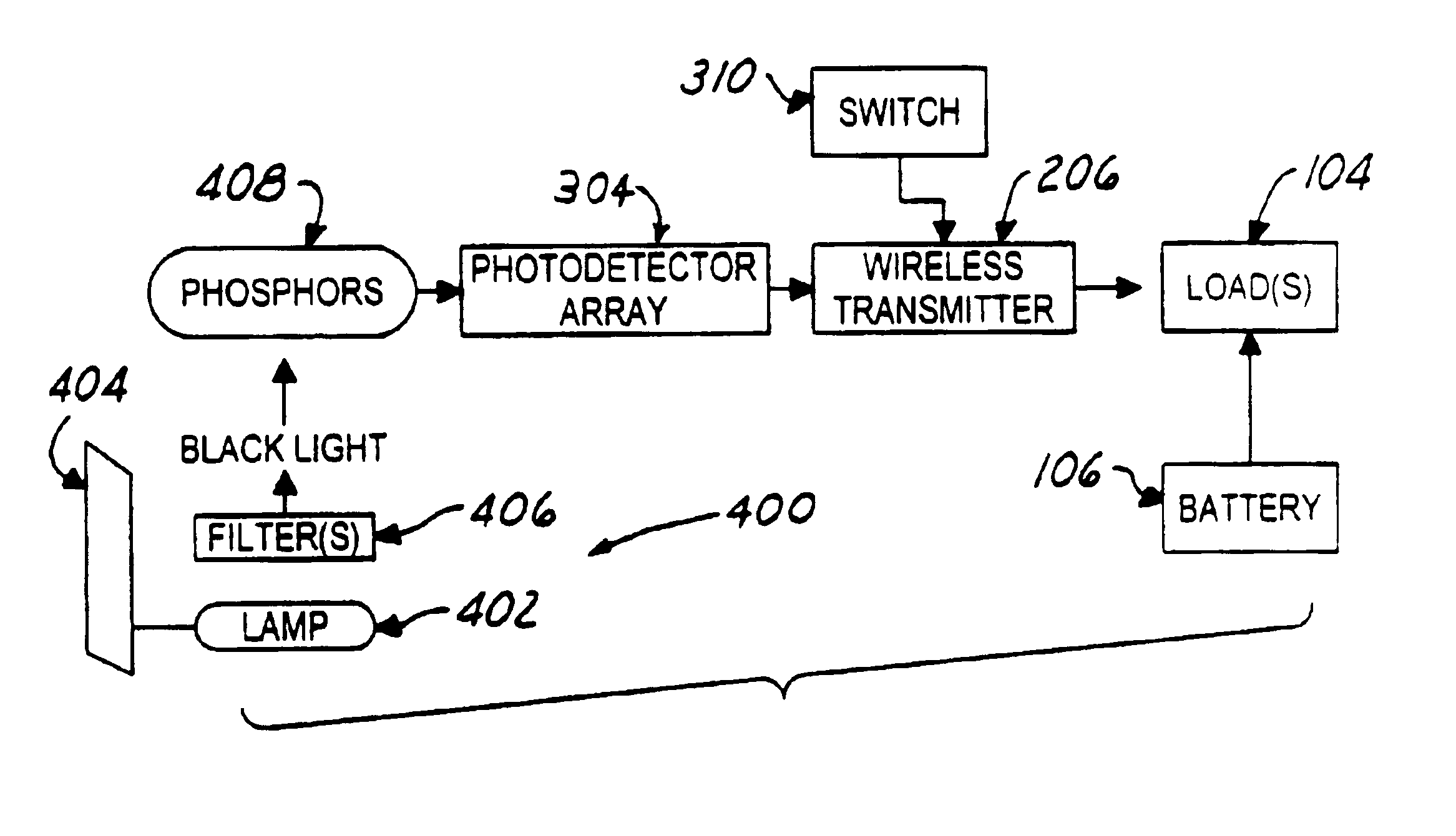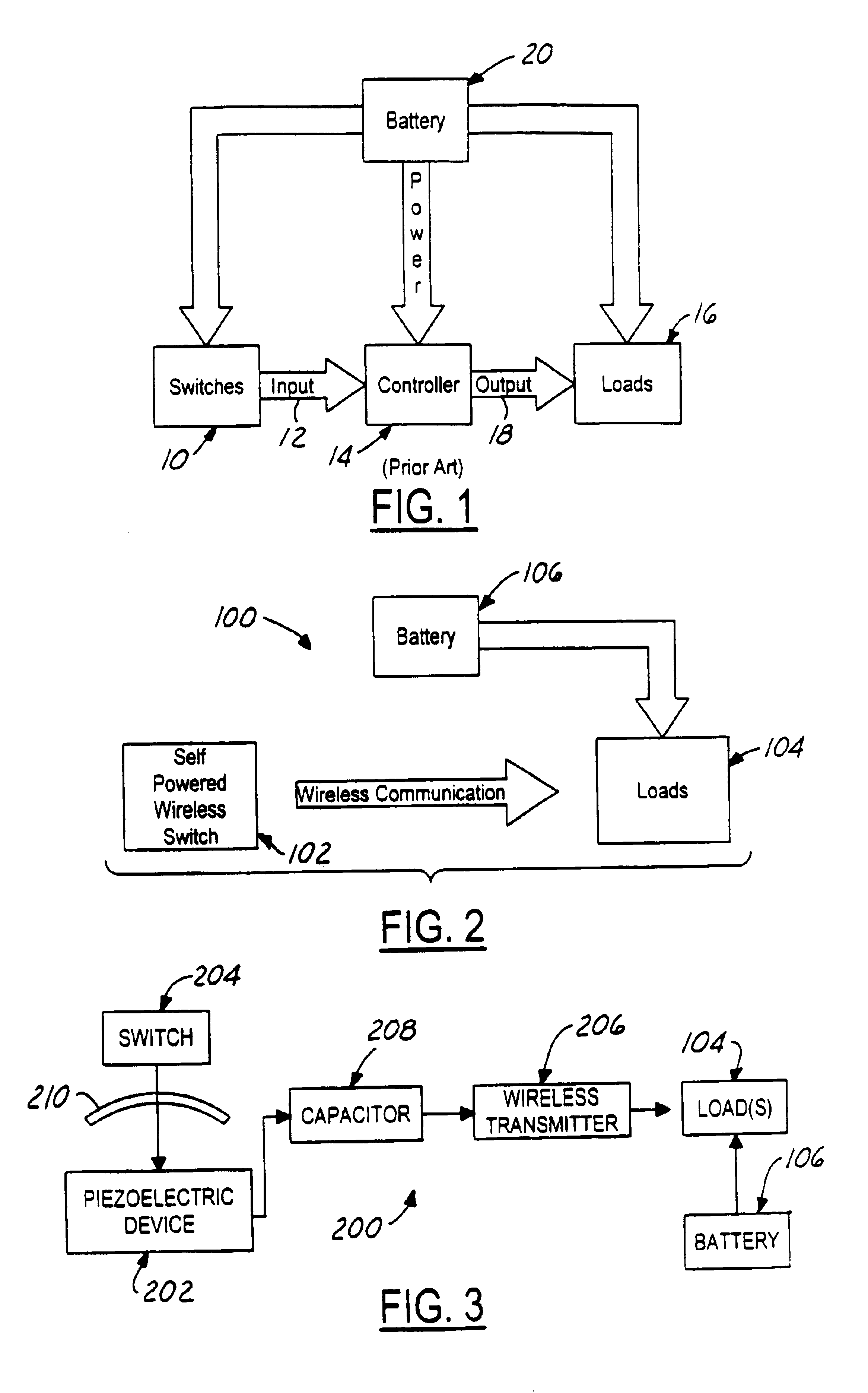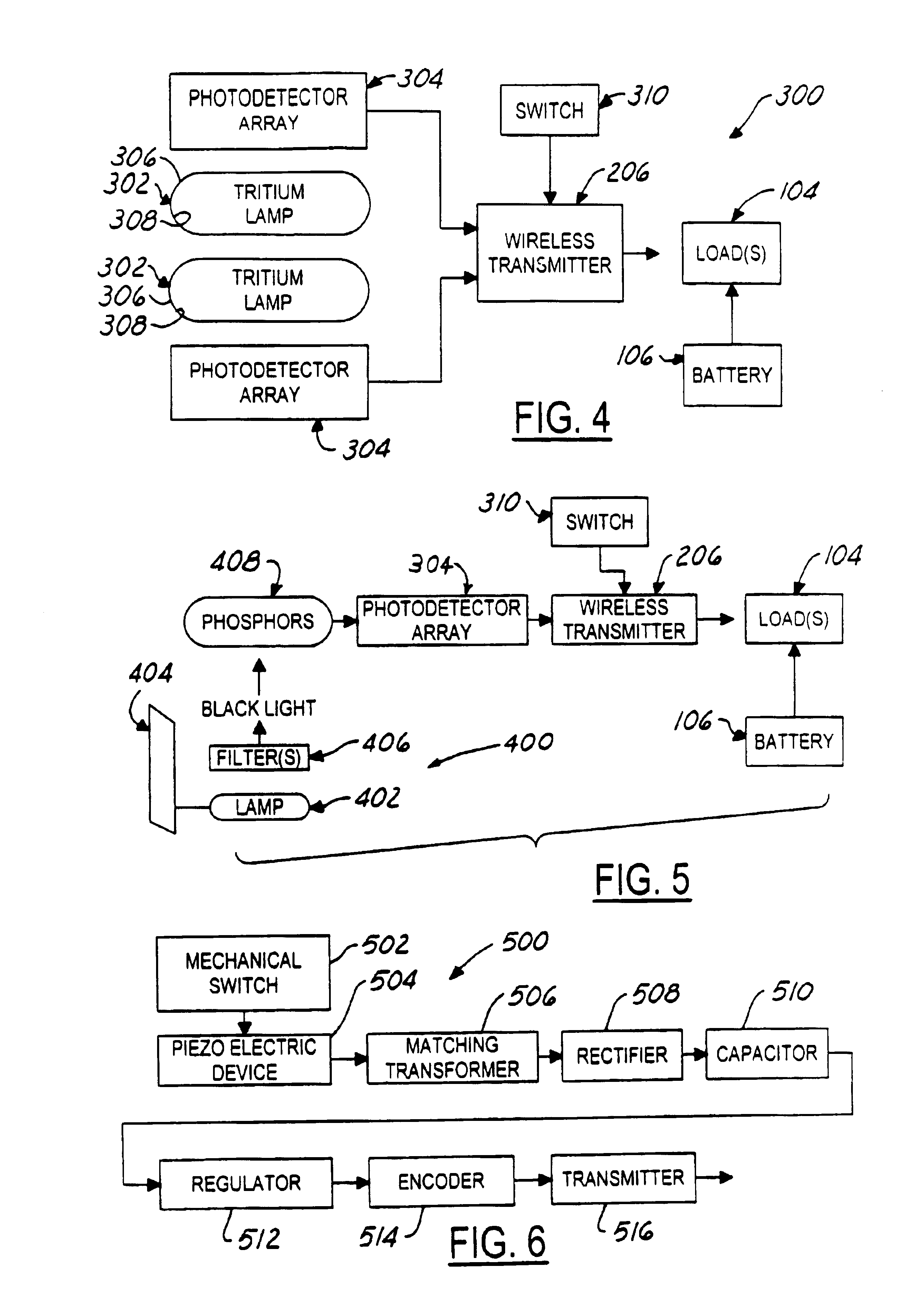Self-powered wireless switch
a self-powered, wireless switch technology, applied in the direction of generator/motor, anti-theft devices, transportation and packaging, etc., can solve the problems of complex array of wire harnesses, the proliferation of components required to implement new features is becoming difficult to manage from cost, serviceability and packaging perspectives, and no major automotive program has received large benefits from this technology
- Summary
- Abstract
- Description
- Claims
- Application Information
AI Technical Summary
Benefits of technology
Problems solved by technology
Method used
Image
Examples
first embodiment
[0029]Referring now to FIG. 3, a self-powered wireless switch arrangement 200 is shown in accordance with the present invention. More specifically, a piezoelectric switch element 202 is arranged to be actuated by a user via a switch handle or button 204. The switch handle operates to apply a mechanical force to deflect or distress the piezoelectric element, which in turn includes a piezoelectric material (for example, PZT-lead zirconate titanate) that operates to convert the mechanical force into an output electric voltage and current. The generated electric power can be directly connected to a wireless transmitter circuit 206, or stored by a capacitor 208. The capacitor would then become the power source for operation of wireless transmitter circuit 206.
[0030]The wireless transmitter circuit can be implemented using RF, infrared, ultrasonic and other wireless technologies known to one of ordinary skill in the art. For example, a 13.6 MHz transmitter circuit can be provided that onl...
second embodiment
[0033]Referring now to FIG. 4, a self-powered wireless switch 300 is shown in accordance with the present invention, where like elements to the previous embodiment have been denoted with the same reference number. In this embodiment, the energy harvesting arrangement uses at least one tritium lamp 302 and a photovoltaic device 304 to power the wireless transmitter circuit 206. The tritium lamp provides a lightweight, long life energy source. For example, these lamps are now being used to illuminate exit signs on airplanes and watch dials. Tritium has a half-life of 12.4 years and decays to helium by releasing a beta particle with a maximum energy of 18.6 keV. This energy is approximately equal to the energy of the electrons in a television tube. Thus, the products of tritium decay, i.e., stable helium and electrons, can be contained within a glass sphere 306. The released beta particles have sufficient energy to excite phosphors 308 that can be coated on the inside of the glass sphe...
embodiment 400
[0037]In an alternative embodiment 400 shown in FIG. 5, the basic tritium power source is replaced with a black light source. For example, in an automobile, the interior could be illuminated with black light via a bulb 402 located in a headliner 404. A conventional bulb produces black light (UV), and one or more filters 406 can be used to eliminate the visible portion of the optical spectrum. Thus, the black light is invisible to the driver, but can be used to excite phosphors 408 to illuminate switch 310 and simultaneously excite photo detectors 304. Visible light could also be used, but depending on the location, could be a distraction to a vehicle occupant, especially at night. For some applications, generating electrical power via black light or mechanical motion may be more attractive in terms of cost than using the tritium-based power source.
[0038]Thus, the self-powered wireless switch of the present invention allows a finger actuated switch to provide sufficient power to oper...
PUM
 Login to View More
Login to View More Abstract
Description
Claims
Application Information
 Login to View More
Login to View More - R&D
- Intellectual Property
- Life Sciences
- Materials
- Tech Scout
- Unparalleled Data Quality
- Higher Quality Content
- 60% Fewer Hallucinations
Browse by: Latest US Patents, China's latest patents, Technical Efficacy Thesaurus, Application Domain, Technology Topic, Popular Technical Reports.
© 2025 PatSnap. All rights reserved.Legal|Privacy policy|Modern Slavery Act Transparency Statement|Sitemap|About US| Contact US: help@patsnap.com



